 "ttyymmnn" (ttyymmnn)
"ttyymmnn" (ttyymmnn)
10/21/2016 at 12:35 • Filed to: Planelopnik, planelopnik history
 8
8
 6
6
 "ttyymmnn" (ttyymmnn)
"ttyymmnn" (ttyymmnn)
10/21/2016 at 12:35 • Filed to: Planelopnik, planelopnik history |  8 8
|  6 6 |
Welcome to This Date in Aviation History , getting of you caught up on milestones, important historical events and people in aviation from October 19 through October 21.
!!! UNKNOWN CONTENT TYPE !!!
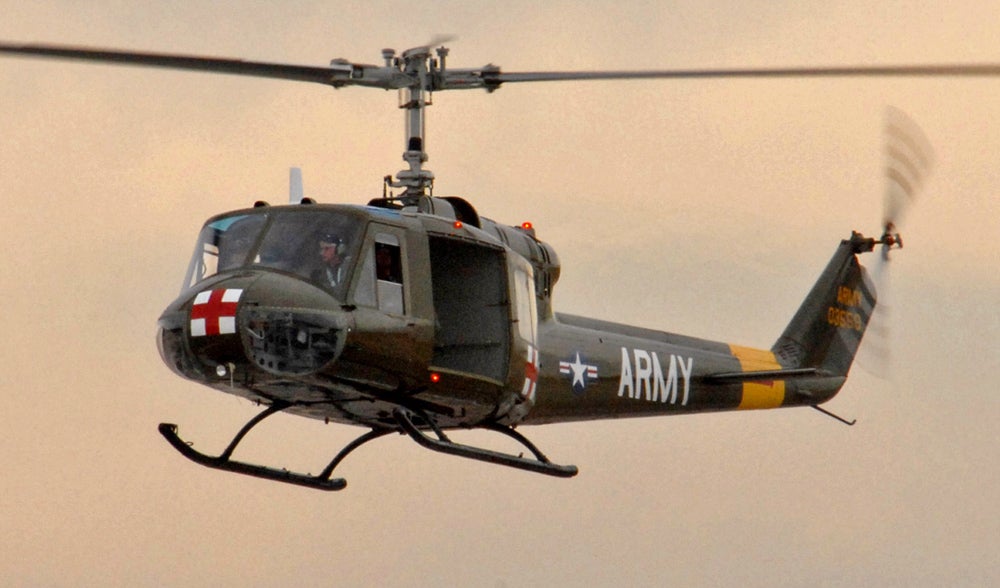
October 20, 1956 – The first flight of the Bell UH-1 Iroquois. Ever since the airplane came to be a weapon of war, certain aircraft have become symbols of the conflicts in which they served. In WWI, the !!!error: Indecipherable SUB-paragraph formatting!!! and the !!!error: Indecipherable SUB-paragraph formatting!!! came to symbolize the rise of aerial warfare and dogfighting, while WWII saw the propeller fighter rise to its zenith with famous fighters like the !!!error: Indecipherable SUB-paragraph formatting!!! , !!!error: Indecipherable SUB-paragraph formatting!!! , and !!!error: Indecipherable SUB-paragraph formatting!!! slugging it out over the Pacific and the !!!error: Indecipherable SUB-paragraph formatting!!! , !!!error: Indecipherable SUB-paragraph formatting!!! and !!!error: Indecipherable SUB-paragraph formatting!!! becoming synonymous with air warfare over Europe. The helicopter entered military service at the end of WWII, and their use was greatly expanded in the Korean War. But the Vietnam War would become known as the Helicopter War, the first conflict that saw widespread use of the helicopter on the battlefield and witnessed the maturation of the concepts of !!!error: Indecipherable SUB-paragraph formatting!!! . The ubiquitous presence of cameras in a war zone for the first time brought images of the Bell HU-1 Iroquois, better known as the Huey, into American living rooms, and the Huey became an indelible icon of the Vietnam War. Where early helicopters were powered by piston engines, the arrival of the turbine engine revolutionized helicopter design and, in 1953, the US Army began looking for a new turbine-powered utility helicopter for medevac, instrument training and general utility. No less than 20 companies submitted proposals. In 1955, the Army selected Bell Helicopter to build three prototypes of their Model 204 that were given the the designation XH-40.
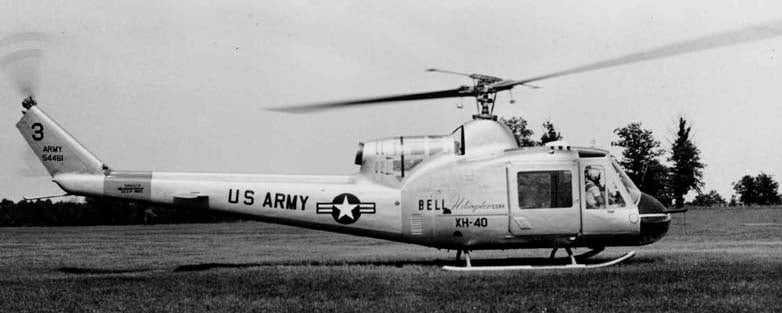
Five years later, the Army had already ordered 100 helicopters, and the designation was changed to HU-1 (Helicopter, Utility) and the nickname “Huey” was born, a nickname that stuck despite a change in designation to UH-1 in 1965. While the turbine engine had definite advantages over earlier piston-powered helicopters in speed and lifting power, the original Hueys were still found to be underpowered. To address that shortcoming, the first significant variant, the UH-1B, was developed with a !!!error: Indecipherable SUB-paragraph formatting!!! engine that increased the lifting power. Bell also elongated the fuselage to accommodate seven passengers or four stretchers. The follow-on UH-1C would see a yet more powerful engine, a new rotor system to combat !!!error: Indecipherable SUB-paragraph formatting!!! , and a longer tail boom. In addition to the Army, the Marine Corps and Air Force also adopted the Huey, with each service using a model that was developed for their specific needs. The Huey entered service with the !!!error: Indecipherable SUB-paragraph formatting!!! , the !!!error: Indecipherable SUB-paragraph formatting!!! and the 57th Medical Detachment in 1959, where it was originally intended only to be used to evaluate the new helicopter. However, the rapidly escalating conflict in Southeast Asia meant that the Huey was quickly pressed into service in Vietnam in 1962. In addition to its medevac and transport roles, the “utility” part of its designation showed as the Huey was quickly armed with guns and rockets to protect the fleets of helicopters dropping troops into landing zones. By 1965, in the !!!error: Indecipherable SUB-paragraph formatting!!! , the Huey had become the modern version of the cavalry horse, transporting soldiers into battle, extricating them when the battle had ended, and carrying away the casualties. The Huey continued to be upgraded throughout its production, and over 16,000 were built between 1956-1987, a number second only to the the !!!error: Indecipherable SUB-paragraph formatting!!! . With the introduction of the !!!error: Indecipherable SUB-paragraph formatting!!! in 1979, the Army began phasing out the Huey, and it was retired from active service in 2005. The Marine Corps continues using a significantly advanced version of the Huey, known as the !!!error: Indecipherable SUB-paragraph formatting!!! . (US Air Force photo by Staff Sgt. Jeremy Smith; US Army photo)
!!! UNKNOWN CONTENT TYPE !!!
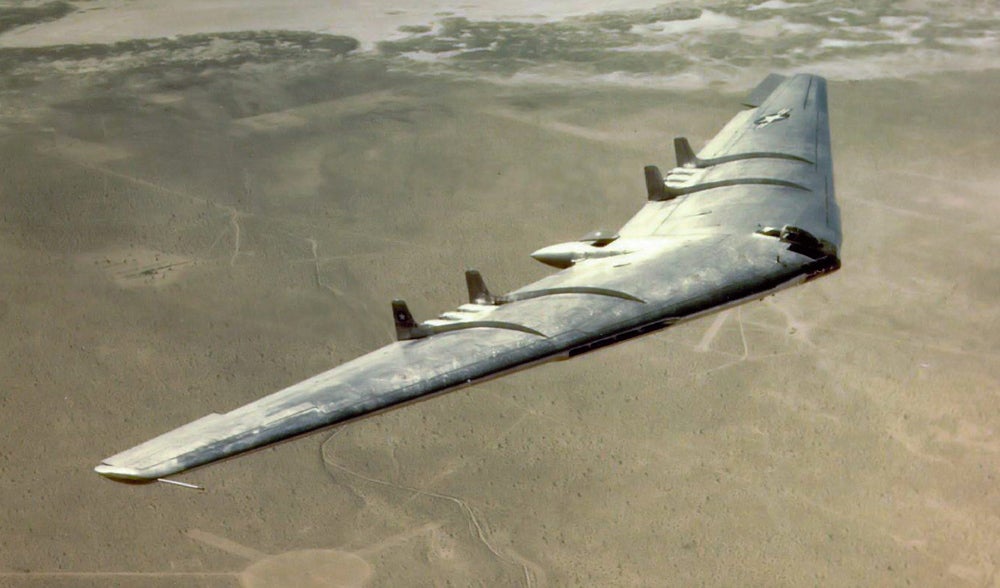
October 21, 1947 – The first flight of the Northrop YB-49. In a traditional aircraft, it is the wings that generate the lift necessary to fly. But all the other parts of the aircraft, particularly the fuselage, while necessary for crew and cargo, provide little to no lift, produce a !!!error: Indecipherable SUB-paragraph formatting!!! and add extra weight. So, in order to create an aircraft that is almost entirely lift, why not remove the entire fuselage and just fly the wing by itself? That was the question that !!!error: Indecipherable SUB-paragraph formatting!!! doggedly pursued throughout the 1930s and 1940s with his flying wing aircraft, but the story of the YB-49 really begins with the !!!error: Indecipherable SUB-paragraph formatting!!! , its piston-engined predecessor. And the story of both aircraft is a frustrating tale of what might have been. In April of 1941, the US Army Air Forces, fearing the fall of England and the loss of bases in Europe, stated the need for a bomber that could attack Nazi-occupied Europe from the US mainland. In response to that eventuality, they requested a new bomber that could carry 10,000 pounds of bombs on a 10,000 mile round trip. !!!error: Indecipherable SUB-paragraph formatting!!! responded with their YB-35, a huge flying wing that was powered by four piston engines turning !!!error: Indecipherable SUB-paragraph formatting!!! . But the piston engines proved to be the YB-35’s Achilles heel. The engines and propellers had never been tested together and problems with vibrations made the powerplants unreliable or even dangerous. Through a fiasco of competing interests, the Army, who supplied the engines, !!!error: Indecipherable SUB-paragraph formatting!!! , the maker of the propellers, and Northrop could not agree on a resolution. So Jack Northrop himself grounded the YB-35 until a suitable powerplant could be found, or until the Army fixed the engines they had provided. But the Army now believed that the future of aviation lay with the jet engine, so they directed Northrop to replace the four propeller engines on the YB-35 with eight turbojet engines.

The YB-49 takes off on its maiden flight.
The re-engined flying wing was now designated the YB-49. The eight !!!error: Indecipherable SUB-paragraph formatting!!! turbojet engines immediately gave the YB-49 better performance, allowing the bomber to soar to 40,000 feet and exceed 520 mph in test flights. The performance validated the flying characteristics of Northrop’s design, but the trade off for this performance was was a drastic drop in the bomber’s range. Early turbojets were notoriously thirsty, and the flying wing’s range was cut in half, thereby eliminating it from consideration as a long range strategic bomber. Even though the YB-49 lost out to the !!!error: Indecipherable SUB-paragraph formatting!!! , a bomber of traditional design that was likely more appealing to Army Air Forces brass, the Army ordered testing of the YB-49 to continue, and existing YB-35 airframes were slated for conversion to jet power. In all, three YB-49s were produced from converted YB-35s, and two YRB-49 reconnaissance models were built before the program was canceled and all the aircraft scrapped. Northrop believed that the cancellation was entirely political, but there is no question that the YB-49 was over budget and behind schedule and, even though the B-36 was an essentially obsolete WWII design, it offered the Air Force a more comfortable option to the radical flying wing. The Air Force tried to make amends to Northrop by awarding the company a contract to build the F-89 Scorpion, though it’s doubtful that Jack Northrop was mollified. Despite the cancellation of the YB-49, the flying wing concept was not dead. Northrop’s vision would eventually be vindicated with the introduction of the !!!error: Indecipherable SUB-paragraph formatting!!! bomber in 1997, and he was allowed to see and hold a model of the Spirit a short time before his death when the project was still top secret. Northrop, unable to speak because of his illness, reportedly wrote on a sheet of paper, “Now I know why God has kept me alive all these years.” Jack Northrop died 10 months later. (US Air Force photos)
!!! UNKNOWN CONTENT TYPE !!!
Short Takeoff
!!! UNKNOWN CONTENT TYPE !!!
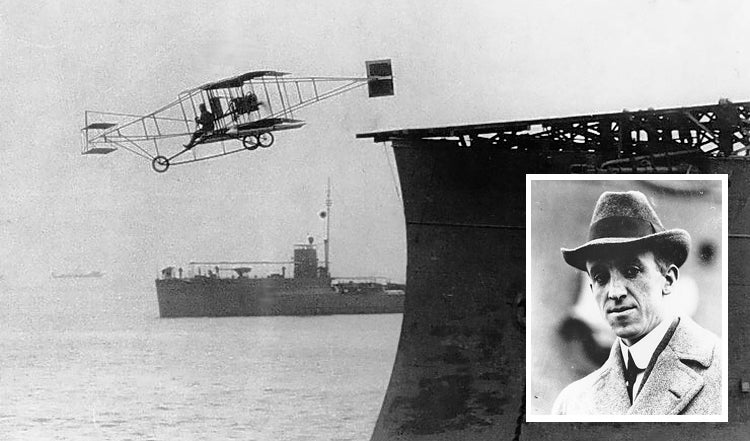
October 19, 1911 – The death of Eugene Ely.
Born in Williamsburg, Iowa on October 21, 1886, Ely began his flying career when he flew—and crashed—a Curtiss biplane purchased by the auto dealer Ely was working for. Undaunted, Ely repaired the plane, and then went to work for
!!!error: Indecipherable SUB-paragraph formatting!!!
. When the US Navy began investigating flying from the deck of a ship, it was Ely who made the first successful takeoff from a ship when he flew from the USS
Birmingham
on November 14, 1910. He followed that feat by landing his
!!!error: Indecipherable SUB-paragraph formatting!!!
onboard the USS
Pennsylvania two
months later. Turned down for Naval service, Ely continued flying exhibitions, but was killed in a crash and posthumously awarded the
!!!error: Indecipherable SUB-paragraph formatting!!!
.
(US Navy photos)
!!! UNKNOWN CONTENT TYPE !!!

October 20, 1988 – The death of Sheila Scott. Born in England in 1922, Scott (née Hopkins) learned to fly in 1958 and went on to set over 100 flight records, making a name for herself with long distance flights. She first flew around the world in 1966, and repeated the feat in the same aircraft in 1969-70. Her greatest feat of distance flying was a 34,000 mile flight in 1971 nicknamed “world and a half” in which she became the first person to fly over the North Pole in a single-engine aircraft. Scott was named an Officer of the !!!error: Indecipherable SUB-paragraph formatting!!! (OBE) in 1968. (NASA photo)
!!! UNKNOWN CONTENT TYPE !!!
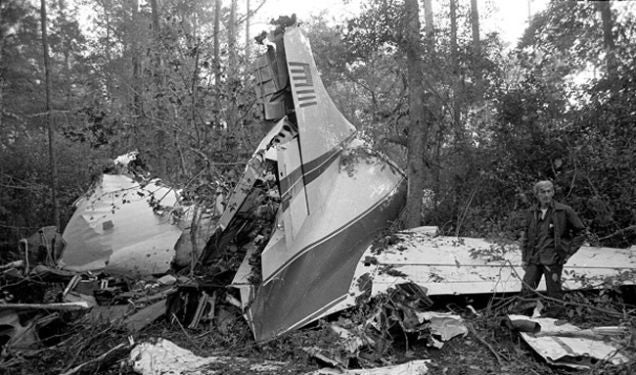
October 20, 1977 – A crash claims the life of members of the band Lynyrd Skynyrd. While flying to Louisiana after a performance in South Carolina, the band’s !!!error: Indecipherable SUB-paragraph formatting!!! (N55VM) ran out of fuel and crashed near Gillsburg, Mississippi, killing band members !!!error: Indecipherable SUB-paragraph formatting!!! , !!!error: Indecipherable SUB-paragraph formatting!!! and !!!error: Indecipherable SUB-paragraph formatting!!! , assistant road manager Dean Kilpatrick, pilot Walter McCreary, and co-pilot William Gray. Other band members, tour manager Ron Eckerman, and members of the road crew suffered serious injuries. The !!!error: Indecipherable SUB-paragraph formatting!!! into the crash determined that the fuel exhaustion was caused by the flight crew’s failure to monitor the aircraft’s fuel levels, exacerbated by a malfunctioning engine that used more fuel than expected. (Photo author unknown)
!!! UNKNOWN CONTENT TYPE !!!
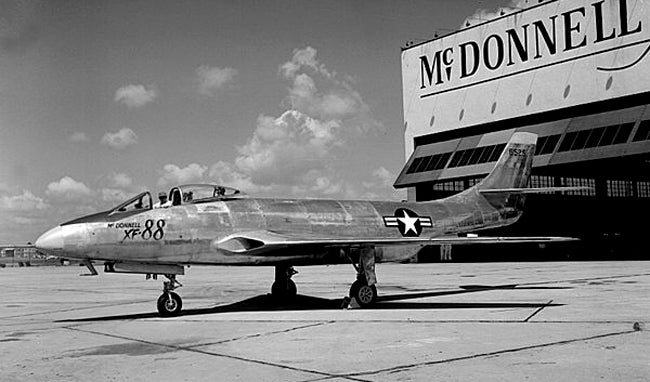
October 20, 1948 – The first flight of the McDonnell XF-88 Voodoo, a fighter designed as long-range escort for USAF bombers and envisioned as an aircraft that could carry out a similar role to that performed by the !!!error: Indecipherable SUB-paragraph formatting!!! during WWII. Initially underpowered, afterburning engines were added to increase the aircraft’s speed, but by that time the long range escort concept had been abandoned in favor of high speed interceptors. Though the XF-88 never entered production, it served as the basis for the supersonic !!!error: Indecipherable SUB-paragraph formatting!!! which first flew in 1954. (US Air Force photo)
!!! UNKNOWN CONTENT TYPE !!!

October 21, 1966 – The first flight of the Yakovlev Yak-40,
the world’s first commuter trijet, and one specifically designed to operate from poorly equipped airports with short or unimproved runways. The Yak-40 was developed to take over shorter routes from older and obsolete piston-powered airliners and could carry up to 32 passengers with a range of just over 1,000 miles. Over 1,000 were produced from 1967-1981, and they provided local service throughout Russia and served over thirty international customers. The Yak-4o remains in service today.
(Photo by Eduard Heisterkamp via
!!!error: Indecipherable SUB-paragraph formatting!!!
)
!!! UNKNOWN CONTENT TYPE !!!
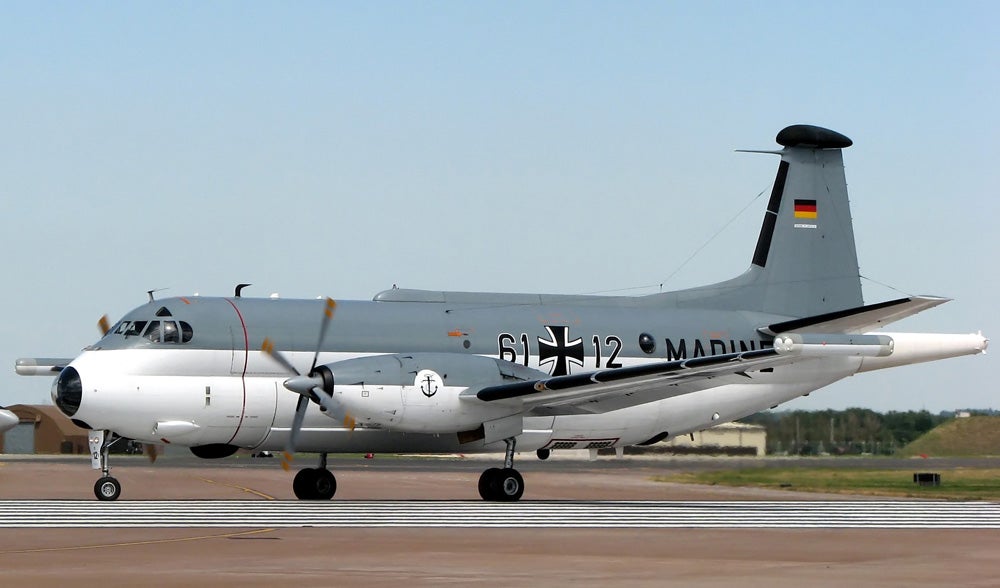
October 21, 1961 – The first flight of the Breguet Atlantique , a turboprop-powered, long-range maritime patrol aircraft that was designed to perform reconnaissance and anti-submarine warfare (ASW) missions and built to replace the !!!error: Indecipherable SUB-paragraph formatting!!! then in service with NATO forces. Aircraft were delivered in two batches, with eighty-seven Atlantique 1 aircraft being built from 1965 to 1968. The Atlantique 2 was produced from 1972 to 1974 with more powerful engines, new avionics, and the ability to fire the !!!error: Indecipherable SUB-paragraph formatting!!! anti-shipping missile. A total of 115 of both variants were produced. (Photo by Arpingstone via !!!error: Indecipherable SUB-paragraph formatting!!! )
!!! UNKNOWN CONTENT TYPE !!!
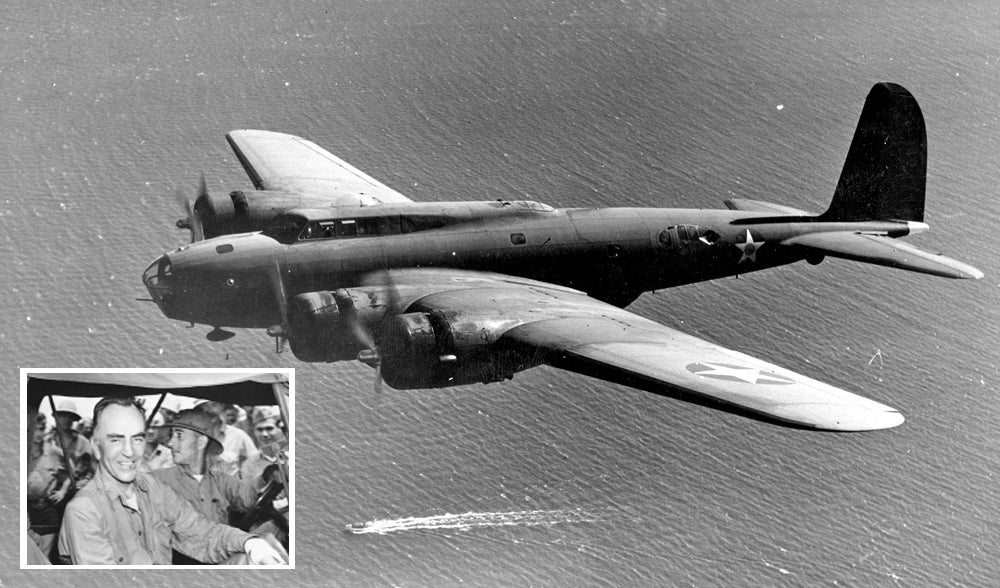
October 21, 1942 – An aircraft carrying American WWI ace Eddie Rickenbacker crashes in the Pacific Ocean.
Rickenbacker was publicly sent on an inspection tour of American bases in the Pacific Theater, but the true nature of his mission was to deliver a message of rebuke to General
!!!error: Indecipherable SUB-paragraph formatting!!!
from President
!!!error: Indecipherable SUB-paragraph formatting!!!
for negative comments the general had made about the administration. The
!!!error: Indecipherable SUB-paragraph formatting!!!
departed Hawaii but then strayed hundreds of miles off course and was forced to ditch in the Pacific Ocean far from normal travel routes. Rickenbacker and the crew drifted in life rafts for 24 days before a US Navy
!!!error: Indecipherable SUB-paragraph formatting!!!
crew finally spotted and rescued the seven survivors. After his recovery, Rickenbacker completed his mission to deliver the letter to MacArthur.
(US Army, US Navy photos)
!!! UNKNOWN CONTENT TYPE !!!
Recent Aviation History Posts
!!! UNKNOWN CONTENT TYPE !!!
!!! UNKNOWN CONTENT TYPE !!!
!!! UNKNOWN CONTENT TYPE !!!
!!! UNKNOWN CONTENT TYPE !!!
!!! UNKNOWN CONTENT TYPE !!!
If you enjoy these Aviation History posts, please let me know in the comments. And if you missed any of the past articles, you can find them all at !!!error: Indecipherable SUB-paragraph formatting!!! .
!!! UNKNOWN CONTENT TYPE !!!
 Jonathan Harper
> ttyymmnn
Jonathan Harper
> ttyymmnn
10/21/2016 at 12:55 |
|
I always enjoy these, thanks!
 Viggen
> ttyymmnn
Viggen
> ttyymmnn
10/21/2016 at 13:04 |
|
Huey! The only helicopter everyone can agree is awesome.
 user314
> ttyymmnn
user314
> ttyymmnn
10/21/2016 at 13:32 |
|
There was a ton of politcs and not a little bad blood between Jack Northrop and Convair. He was even (alledgedly) told at one point there were too many Air Force contractors and that his company should become part of Convair. Northrop got the last laugh though: they’re still making planes, and where is Convair? A defunct subsidiary of LockMart.
 ttyymmnn
> Jonathan Harper
ttyymmnn
> Jonathan Harper
10/21/2016 at 14:33 |
|
My pleasure! Thanks for reading.
 gmporschenut also a fan of hondas
> ttyymmnn
gmporschenut also a fan of hondas
> ttyymmnn
10/21/2016 at 22:44 |
|
though the b-36 was an old design, it suffer from a non controllable spin out if the engine crapped out.
 gmporschenut also a fan of hondas
> gmporschenut also a fan of hondas
gmporschenut also a fan of hondas
> gmporschenut also a fan of hondas
10/21/2016 at 23:46 |
|
edit: though the b-36 was an old design, it wouldn’t suffer from a non controllable spin out if an engine crapped out.